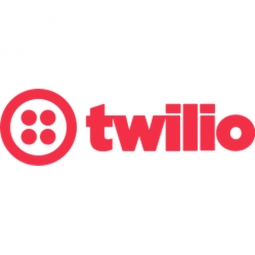
Technology Category
- Infrastructure as a Service (IaaS) - Cloud Computing
- Infrastructure as a Service (IaaS) - Virtual Private Cloud
Applicable Industries
- Cement
- Equipment & Machinery
Applicable Functions
- Sales & Marketing
Use Cases
- Intrusion Detection Systems
- Tamper Detection
Services
- System Integration
The Customer
About The Customer
EMC is a global leader in the field of cloud computing, data storage, and data virtualization. The company has a large workforce of 68,000 employees who rely on a critical set of IT tools to perform their jobs. These employees are located at EMC's headquarters and around the world. The company's needs are incredibly diverse and rapidly changing, requiring a flexible and scalable solution for IT alerts. EMC was sending out 1.2 million alert emails in a single month, indicating the scale of their operations and the volume of IT alerts required.
The Challenge
EMC, a global leader in cloud computing, data storage, and data virtualization, was struggling with an inefficient and slow method of alerting its 68,000 employees about IT system updates. The traditional method involved drafting an email, proofing it, getting approval from several stakeholders, and finally sending it. This process was not only labor-intensive but also unreliable as it depended on the user's email being unaffected and the user actually opening and reading the email. After sending 1.2 million alert emails in a single month, EMC decided to find a more efficient and immediate way to alert employees. The challenge was to find a solution that was not only faster and less labor-intensive but also globally available and scalable to EMC's needs.
The Solution
EMC decided to build an automated IT alerting system and chose Twilio SMS to power it. Twilio SMS was chosen because it was three times more likely to be read by a user than an email and was globally available. Initially, EMC considered on-premises SMS infrastructure solutions, but they were either too expensive or too brittle. Twilio offered the flexibility and global scale that EMC needed. In addition to connecting Twilio SMS directly to the newly built automated alerting system, EMC added an internal API service layer on top of Twilio. This service layer, along with a simple dashboard, empowered employees to choose which services they wanted to monitor and create new alerts themselves. For instance, sales architects could monitor the virtual machines in their demo environments while on the road and receive a text alert if a machine stopped responding.
Operational Impact
Quantitative Benefit

Case Study missing?
Start adding your own!
Register with your work email and create a new case study profile for your business.
Related Case Studies.

Case Study
Smart Water Filtration Systems
Before working with Ayla Networks, Ozner was already using cloud connectivity to identify and solve water-filtration system malfunctions as well as to monitor filter cartridges for replacements.But, in June 2015, Ozner executives talked with Ayla about how the company might further improve its water systems with IoT technology. They liked what they heard from Ayla, but the executives needed to be sure that Ayla’s Agile IoT Platform provided the security and reliability Ozner required.

Case Study
IoT enabled Fleet Management with MindSphere
In view of growing competition, Gämmerler had a strong need to remain competitive via process optimization, reliability and gentle handling of printed products, even at highest press speeds. In addition, a digitalization initiative also included developing a key differentiation via data-driven services offers.

Case Study
Predictive Maintenance for Industrial Chillers
For global leaders in the industrial chiller manufacturing, reliability of the entire production process is of the utmost importance. Chillers are refrigeration systems that produce ice water to provide cooling for a process or industrial application. One of those leaders sought a way to respond to asset performance issues, even before they occur. The intelligence to guarantee maximum reliability of cooling devices is embedded (pre-alarming). A pre-alarming phase means that the cooling device still works, but symptoms may appear, telling manufacturers that a failure is likely to occur in the near future. Chillers who are not internet connected at that moment, provide little insight in this pre-alarming phase.

Case Study
Premium Appliance Producer Innovates with Internet of Everything
Sub-Zero faced the largest product launch in the company’s history:It wanted to launch 60 new products as scheduled while simultaneously opening a new “greenfield” production facility, yet still adhering to stringent quality requirements and manage issues from new supply-chain partners. A the same time, it wanted to increase staff productivity time and collaboration while reducing travel and costs.

Case Study
System 800xA at Indian Cement Plants
Chettinad Cement recognized that further efficiencies could be achieved in its cement manufacturing process. It looked to investing in comprehensive operational and control technologies to manage and derive productivity and energy efficiency gains from the assets on Line 2, their second plant in India.

Case Study
Integration of PLC with IoT for Bosch Rexroth
The application arises from the need to monitor and anticipate the problems of one or more machines managed by a PLC. These problems, often resulting from the accumulation over time of small discrepancies, require, when they occur, ex post technical operations maintenance.



